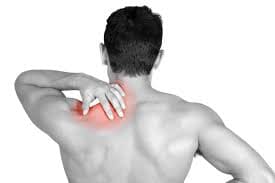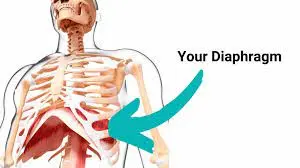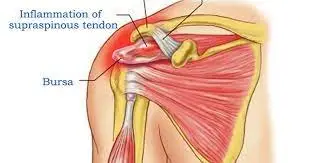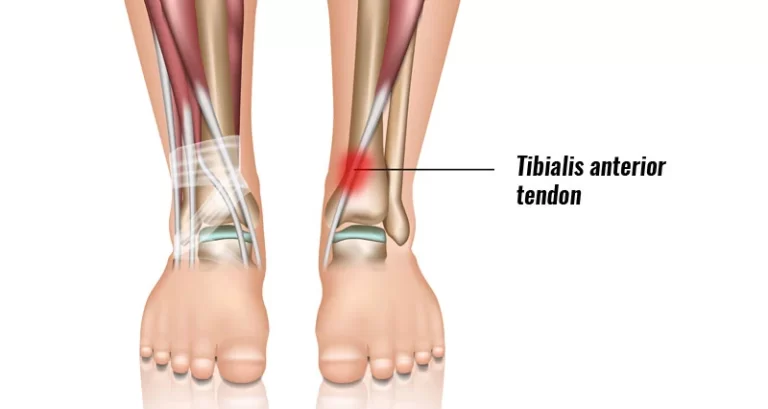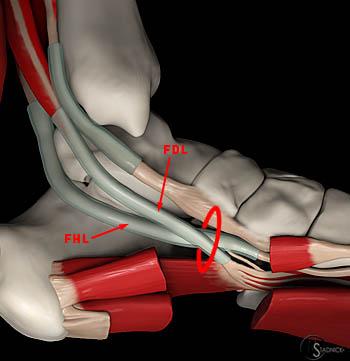Piriformis Muscle Pain: Cause, Symptom, Treatment, Exercise
When you feel pain in the buttocks & in the lower back which radiates down the leg to the foot, it is indicated to be Piriformis muscle pain.
This pain occurs due to many reasons mostly when occurring the Piriformis syndrome.
Table of Contents
What is Piriformis muscle pain?
- Piriformis muscle pain occurs in the buttocks or lower back which radiates down the leg to the foot.
- Piriformis muscle pain is usually due to compression/contraction of the piriformis muscle on certain areas of the sciatic nerve;
- The most common risk factor of Piriformis muscle pain is overuse/trauma from sports, but other conditions are produced by symptoms.
What is the anatomy of the Piriformis muscle?
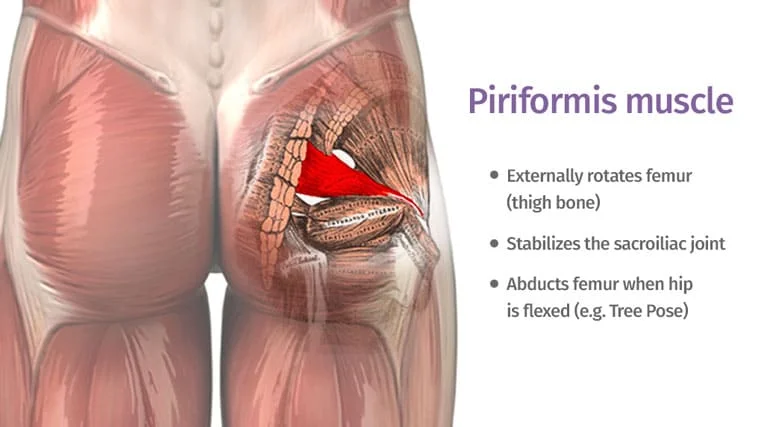
- Piriformis is a muscle of the gluteal region that is locked deep to the gluteus maximus.
- This muscle is attached to one end with the sacrum & the other one is with the greater trochanter.
- This Piriformis muscle is responsible for stabilizing the hip joint & moving the thigh in various directions.
- This Piriformis muscle is a flat pyramid-shaped muscle that arises from the anterior surface of the sacrum, between the sacral foramina.
- Then It passes laterally to exit the pelvis bone through the greater sciatic foreman, often it is attached to the gluteal surface of the ilium, which is close to the posterior inferior iliac spine.
- This muscle is inserted into the apex of the greater trochanter with the posterosuperior to the insertion site of the conjoined tendon of the gemellus superior, obturator internus & gemellus inferior muscle.
What are causes of the piriformis muscle pain?
- Overuse of the piriformis muscle, which is produced by excessive exercise.
- Running & other repetitive activities, in these activities, to use this muscle.
- The patient is sitting for long periods.
- When the patient is lifting heavy objects.
- When the patient is doing extensive stair climbing.
- When occur Injuries in the muscle which is doing damage to the muscle & press down on the sciatic nerve.
- Most Typical piriformis muscle pain causes include:
- A vehicle accident
- A bad fall
- A direct hit during sports
- A penetration wound that reaches the muscle
- A sudden twist of the hip
What are the signs & symptoms of piriformis muscle pain?
- The patient feels the pain mostly in the muscles.
- The patient is also feeling the tingling & numbness in the lower leg due to piriformis muscle pain.
- The patient feels the radiating pain that is back to the foot.
- The patient feels severe pain when attempting certain movements running, climbing stairs & walking.
- This muscle pain is usually triggered by some position :
- Running
- Sitting
- Applying pressure over the piriformis muscle
- Climbing stairs
- Sciatica is the main symptom of piriformis muscle pain means the pain is referred to in the leg.
- The patient feels numbness & tingling in the buttocks & this sensation is extended down to the back of the leg
- The patient also presents tenderness in the buttocks
- The patient feels difficulty in sitting position & this pain becomes worse when the patient is sitting for a long time.
What is the diagnosis of piriformis muscle pain?
- Healthcare professionals are diagnosed with piriformis muscle pain based on the patient’s history & physical exam.
- The cause of the muscle pain is diagnosed/ruled out by CT, MRI, electromyography & injection tests.
- First, the doctor checks the medical history & symptoms & tries to find the cause of the pain
- The doctor checks the swelling & posture by observation
- In the examination, the patient checks the ROM of the affected lower limb.
- Some imaging tests are also used to rule out the other causes of the pain.
- An MRI scan & a CT scan help them to the doctor to determine the arthritis/a ruptured disk which is causing pain.
What is the treatment of piriformis muscle pain?
- In the starting phase of pain pain relief is used to the RICE principle.
- R- rest = Patient is doing the rest when the muscle pain is occurring means not doing prolonged sitting & not lifting heavy objects.
- I – ice = Applied to ice on the area of pain for the pain, the patient is also applied to ice pack & frozen peas for pain relief & swelling.
- C- compression = Applied to compression bandage on the area of pain for the reduction to swelling.
- E – elevation = Elevated to the lower limb to reduce the swelling.
- Treatment of the piriformis muscle depends upon the chronicity of the disease.
- The treatment includes physical therapy, stretching, exercise & medical treatments like injection therapy, opiates, NSAIDs & infrequently surgery.
- Doctors & other health professionals who are treated for piriformis pain include orthopedists, physical therapists, osteopathic physicians, sports medicine doctors, and occupational therapists.
- There are several types of home remedies for piriformis muscle pain like exercises, stretching, and a cold pack which is used to help reduce the symptoms of piriformis pain and help muscles heal.
- The Treatment given consists of rest & and initial physical therapy, & performed individual flexion, rotation & other basic movements that stretch the piriformis muscle.
- A physiotherapist gives soft-tissue massage to the gluteal with lumbosacral areas & as well as cold packs & occasionally sometimes applied to electrical stimulation.
- Occupational therapy is instructed to the patient to avoid prolonged sitting which increases the symptoms of muscle.
- When this piriformis muscle pain is the reason for the sciatic nerve pressure that need surgical intervention for the release of the pressure of the sciatic nerve.
- Some patients get the benefit from the transrectal massage which is applied by the therapeutic ultrasound treatment.
- Medication therapy for piriformis muscle pain
- The doctor suggests taking a Local injection of anesthetic drugs such as lidocaine, and bupivacaine.
- Take Oral NSAIDs = nonsteroidal anti-inflammatory drugs over-the-counter such as ibuprofen.
- Some doctors treat piriformis muscle relaxants and drugs & also give corticosteroids.
- The patient is also given Over-the-counter painkillers, like naproxen.
What is the physiotherapy treatment for piriformis muscle pain?
- In the physiotherapy treatment of piriformis muscle pain stretching & massage are used for pain relief.
Stretching for the piriformis muscle pain:
- Supine piriformis stretch
- Cross-body piriformis stretch
- Knee-to-chest piriformis stretch
- 4-point piriformis stretch
- Standing piriformis stretch
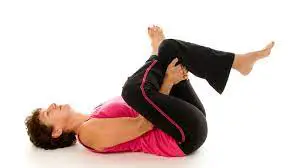
Supine piriformis stretch :
- The patient is lying on the back with both legs flat for the stretching position.
- Bending the knee joint & pull the affected leg up toward the chest.
- Then the patient is held behind the knee joint with the help of one hand & grasping the ankle joint with the help of the other hand.
- Leading with the ankle joint, pull the knee joint towards the opposite knee till a stretch is felt.
- Do not force on the ankle/knee joint beyond a comfortable position.
- Hold this stretching position for 30 seconds, then slowly return to the starting position.
- Always do the 3 complete sets of stretches per day.
Cross-body piriformis stretch:
- The patient is lying on the back with both legs flat for the exercise.
- The patient is placed on the foot of the affected leg on the floor outside the unaffected knee.
- Use with the opposite hand, the patient pulls the knee of the bent leg straight across the body till the patient feels the stretch.
- The patient does not force the knee into the floor.
- Hold this stretching position for 30 seconds, then slowly return to the starting position.
- Always do the 3 complete sets of stretches per day.
Knee-to-chest piriformis stretch:
- The patient is lying on the back with both legs bent.
- Then place the ankle joint of the affected leg on the thigh of the other leg near the knee joint.
- The patient is Using both hands & gently pulling the unaffected foot off the ground till a stretch is felt in the affected side buttock.
- Hold this stretch position for 30 seconds, then slowly return the foot to the ground.
- Always do the 3 complete sets of stretches per day.
4-point piriformis stretch:
- This stretching starts with all four limbs.
- Tuck the injured leg in front of the body so the calf muscle is essentially parallel to the shoulder joint.
- Then Straighten the knee joint of the other leg & lower the hip joint toward the floor till a deep stretch is felt in the affected hip joint.
- Do not force the body to touch the floor.
- Hold this stretching position for 30 seconds, then unbend the injured leg.
- Always do the 3 complete sets of stretches per day.
Standing piriformis stretch :
- The starting position is the standing position.
- Put on to the painful leg over to the knee joint of the other leg while in the standing position.
- Then Bend to the standing leg & try to make it to the number 4 with the hip joint lowered off to the ground at a 45-degree angle.
- After that Bend, the waist down & swing the arms down while holding the back is straight.
- The patient is to Stay in this stretching position for 30 to 60 seconds.
- Then Switch to the legs & repeat this stretching position 3 times 1 time.
Massage for the piriformis muscle pain:
- Foam roller massage
- Tennis ball massage
- Sitting on a ball
Foam roller massage :
- The patient is in a Sitting position on a foam roller so that the ends are pointing away from these sides.
- This exercise starts with the feet flat on the floor in front of the hands which is supporting the weight behind the body.
- Then Cross an ankle joint over the opposite knee joint.
- Lean to the side so that the bulk of the weight is on the hip joint of the crossed leg.
- Rock back & forth on the roller and feel the discomfort subside.
- The patient is to Continue this massage for up to 60 seconds, then repeat this massage on the other side.
Tennis ball massage:
- The patient is Sitting on the ground & put the ball under the side of the left hip joint.
- Support the weight behind with the hands.
- Cross the left ankle joint over the opposite knee joint.
- Then Roll around on the ball till find an area of discomfort.
- Then Continue rolling over this area for up to a minute till the discomfort subsides.
- Repeat this message on the other side.
Sitting on a ball:
- The patient is Sitting with the tennis ball & another similar-sized ball under the hip joint.
- The patient is performing this massage either on the ground & a sitting position.
- The patient is to keep both legs straight / bend the leg on the side with the ball under the hip joint so that the sole is against the opposite thigh.
- Then Gently push down till they feel some discomfort.
- After that Return to the starting position.
- The patient is repeated on the same side till the feel less discomfort in the tender area.
- Repeat this exercise on the other side.
What is the Risk factors of this piriformis muscle pain?
- Risk factors of the piriformis muscle include the some points :
- If they occur Inflammation like overuse & sprain of the muscle
- Occur trauma usually blunt trauma onto the buttocks.
- Hematoma occurs in the piriformis muscle
- If they occur Scar formation in the muscle
- If the Cyst & Tumor in the surrounding part of the muscle.
What is the prevention of piriformis muscle pain?
- Do the warm-up & stretch before the run & every exercise.
- Then gradually build up the intensity of exercise & sports activity
- Avoid running up & down hills /over uneven surfaces
- Get up & move around not sitting/lying down too long without some activity


